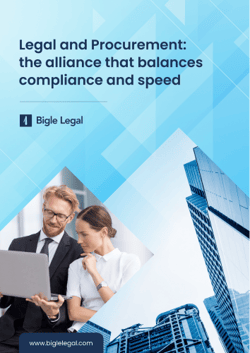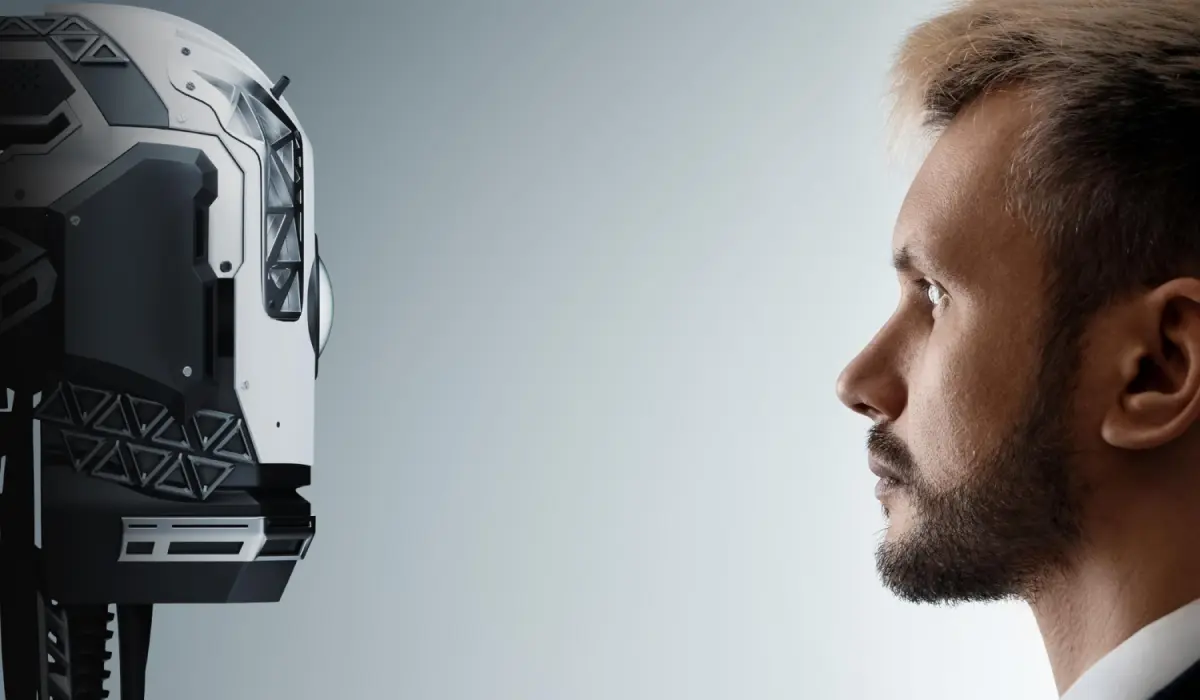How to partner Legal and Procurement to balance compliance and speed
If you work in a legal department, you will know the importance of ensuring the compliance of all company operations and that every area has questions and concerns about certain processes. Procurement departments are no exception. What's more, they feel the pressure to provision their company effectively and securely and, in the process, they work with hundreds, even thousands, of documents. This involves support and review from the legal department, which is often overloaded with work and requests; legal may even be considered a process stopper on occasion.
In this article, we will show you tips and tools to boost collaboration between Legal and Procurement, how to eliminate these bottlenecks and create a strategic alliance between the two departments. Here we go!

In this article you will find:
- How to avoid process bottlenecks by collaborating with Procurement
- How to balance speed and compliance
- Reduce manual tasks in Legal and Procurement
- Procurement documents that can be automated
- State-of-the-art legal technology for procurement
How to avoid process bottlenecks by collaborating with Procurement
In many cases, the prioritisation of objectives and the high volume of work, together with the rush to meet deadlines, mean that the legal and procurement areas end up working in isolation in silos. This, in the long run, inevitably leads to conflict and blocked processes. The key to successfully balancing the interests of both departments is to encourage collaborative working, sharing goals rather than seeking differences.
By aligning goals and communicating effectively, both departments can find joint solutions that optimise processes without compromising legal integrity. Let's look at some objectives that require collaboration between the two departments:
- Total cost of procurement.
- Contract performance.
- Level of supplier satisfaction.
- Procurement delivery time.
- Risk reduction.
How to balance speed and compliance
Legal must ensure that the documents handled by the procurement department are secure, as well as guarantee their integrity in accordance with the law and in the interests of the company. But there is a direct conflict that goes against this idea: legal is a cross-cutting department overloaded with work and most of the time does not have the time to review contracts in time to ensure these two points. In this context, technology plays a key role.
Technology has a fundamental part to play because it helps to standardise, automate and control routine and labour-intensive processes in both the procurement and legal areas. By using a unified contract management solution with the database and other procurement platforms, processes are secured while ensuring adherence to the requirements of the legal area.
To this end, technology is available that allows for the joining of efforts between areas, specifically for the procurement and legal areas. Contract Lifecycle Management (CLM) technology contributes to effective collaboration and achieves the desired balance between speed and compliance.
Reduce manual tasks in Legal and Procurement
There are manual and repetitive tasks that consume excessive time and resources, both in the legal and procurement areas; tasks that have become obsolete in today's work rhythms. However, technology makes it possible to minimise or even eliminate them, so that professionals can devote their valuable time to adding value with more strategic tasks. That is why it is crucial for procurement and legal to seek to automate processes with documents.
How many hours does a professional spend managing contracts or answering emails? The truth is that all those wasted hours could be invested in strategy development, supplier relations or improving interdepartmental communication, among many others.
Procurement documents that can be automated
Thanks to the right document automation technology, the procurement area can self-supply itself with legal documents. What does this mean? Will they go it alone and legal will not have access to the legal documents that are created in procurement? Not at all. The system is based on close collaboration and a solid foundation set in advance by legal. By automating the procurement document templates, legal will ensure that these comply with all legal requirements and are updated and synchronised to the latest change. Procurement will be independent of Legal at points where it wasn't before; this continued non-dependency gives procurement departments greater speed and effectiveness.
Procurement will be able to access a form in a simple way, which will be used to generate documents in a matter of minutes and with no errors whatsoever. Let's take a look at some examples of the documents that procurement can automate with a CLM:
- Confidentiality contracts.
- KYC's or Know Your Customer.
- RFI or Request For Information.
- RFP or Request For Proposals.
- Supplier contracts.
- Product supply contracts.
- Service agreements.
- Software licence agreements.
- Collaboration agreements.
- Contracts for the commissioning of personal data processing.
State-of-the-art legal technology for procurement
Technology is power and software is already part of the day-to-day work of procurement departments, where efficiency is a top priority. But, in a time when there is a plethora of different types of software, is the procurement department opting for those that really make the job easier and more efficient? Inventory management software is essential, as is any software that facilitates operations, proper collaboration and process scalability.
But there is a type of solution designed to give a twist to the efficiency of the department and complement the rest of the software you use, only it does so from a cross-departmental point of view. This technology drives not only collaboration but also effectiveness between areas that share common objectives, as is the case with CLM, which benefits both procurement and legal. In this case, in addition to assuming the implementation of this technology, both areas share its benefits and even the distribution of costs.
Want to know more about how to align your legal and procurement departments? Download our ebook, "Legal and Procurement: the alliance that balances compliance and speed" to find out:
- How to streamline approval processes from legal to procurement.
- How legal can help procurement to reduce manual tasks.
- State-of-the-art legal technology to consolidate the procurement area of the future.
 By
By



